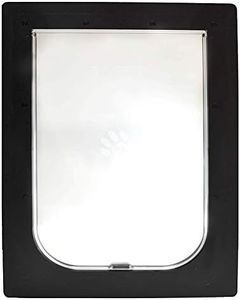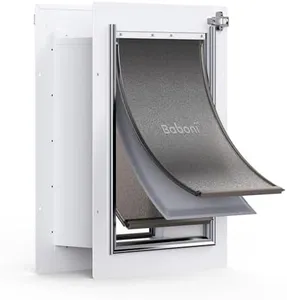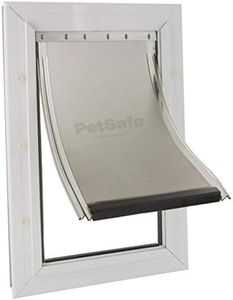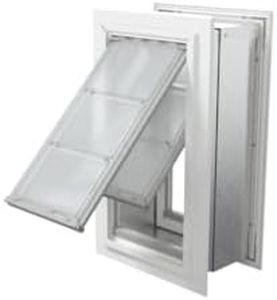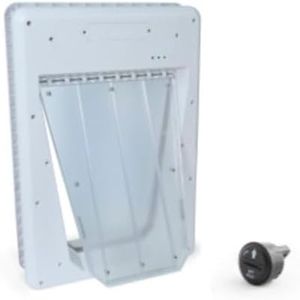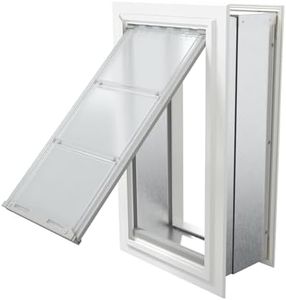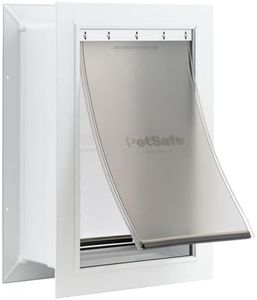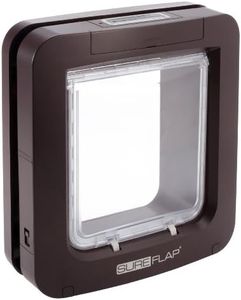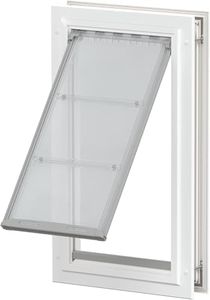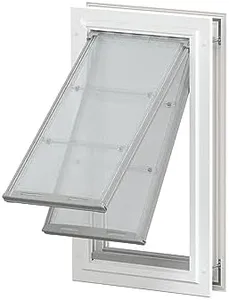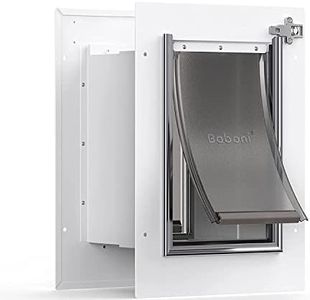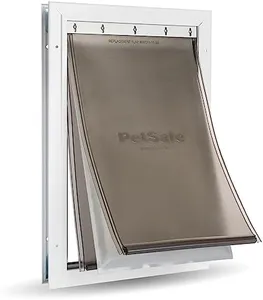We Use CookiesWe use cookies to enhance the security, performance,
functionality and for analytical and promotional activities. By continuing to browse this site you
are agreeing to our privacy policy
10 Best Dog Doors
From leading brands and best sellers available on the web.Buying Guide for the Best Dog Doors
Choosing the right dog door can make life easier for both you and your pet by giving your dog the freedom to go outside without needing your help every time. The perfect dog door depends on your dog's size, the security of your home, your environment, and your home's construction (door or wall placement). Before buying, think about where you'll install it, your dog's habits, and any special weather or safety needs.SizeThe size of a dog door refers to the opening your pet must pass through. It's crucial because a door that's too small can be uncomfortable or even unsafe for your dog, while a door that's too big may be a security risk or let in more cold or hot air. When navigating sizes, you'll usually find options for small, medium, large, and extra-large dogs. Small doors are suitable for toy and small breeds, while larger doors accommodate bigger breeds like Labradors or German Shepherds. To pick the right one, measure the widest part of your dog and its shoulder height, and ensure the opening is a bit bigger than those numbers so your dog can move comfortably.
Installation TypeInstallation type refers to where and how the dog door is fitted, like into a standard house door, a sliding glass door, or a wall. This is important because it affects the complexity of installation, how the door will look, and whether it fits your home’s design. Typical types include door-mounted, wall-mounted, and patio panel dog doors. If you want a straightforward install and have a suitable back door, door-mounted is often easiest. If there isn’t a good door space or you want direct access to a backyard from another area, wall-mounted works well. Consider your home’s layout, your installation comfort level, and the best spot for your dog to go out.
Security FeaturesSecurity features refer to mechanisms that prevent unwanted access, such as locking panels or electronic controls. These matter because you want to keep your home safe from intruders, stray animals, or bad weather. Some doors have simple slide-in covers, while others have smarter features like microchip or magnetic entry for your own dog only. For basic needs, a manual locking cover can work, but for added security or if wildlife is an issue, consider doors that only unlock for your pet’s collar key or microchip.
Weather ResistanceWeather resistance describes how well the dog door keeps out wind, rain, cold, or heat. This is key for comfort in your home and to avoid high energy bills. Basic doors may have single flaps, while more advanced models use double flaps or magnetic closures. If you live in a mild climate, a single flap may be fine, but for extreme temperatures, look for multiple flaps, tight seals, and insulated materials to minimize drafts and weather intrusion. Choose based on your local climate conditions and how much you value energy efficiency.
Ease of UseEase of use is about how comfortable and straightforward it is for your dog to use the door. This involves the flap’s weight, transparency, and how easy it is for your pet to learn how to use it. Some doors are rigid, while others are soft. If your dog is timid or small, a lighter, flexible flap is better. For larger or more confident dogs, heavier flaps are fine and may help with insulation. Think about your dog’s personality and physical ability to push open a door comfortably.
